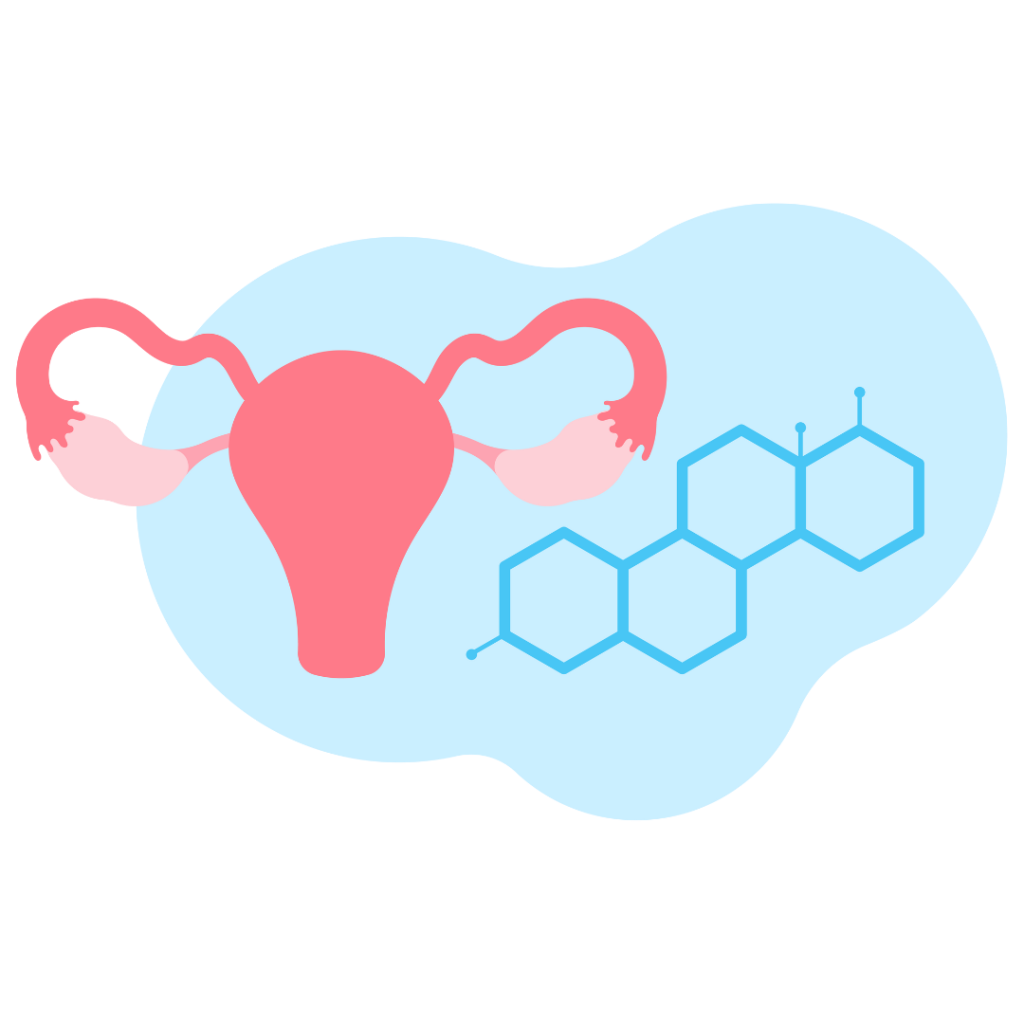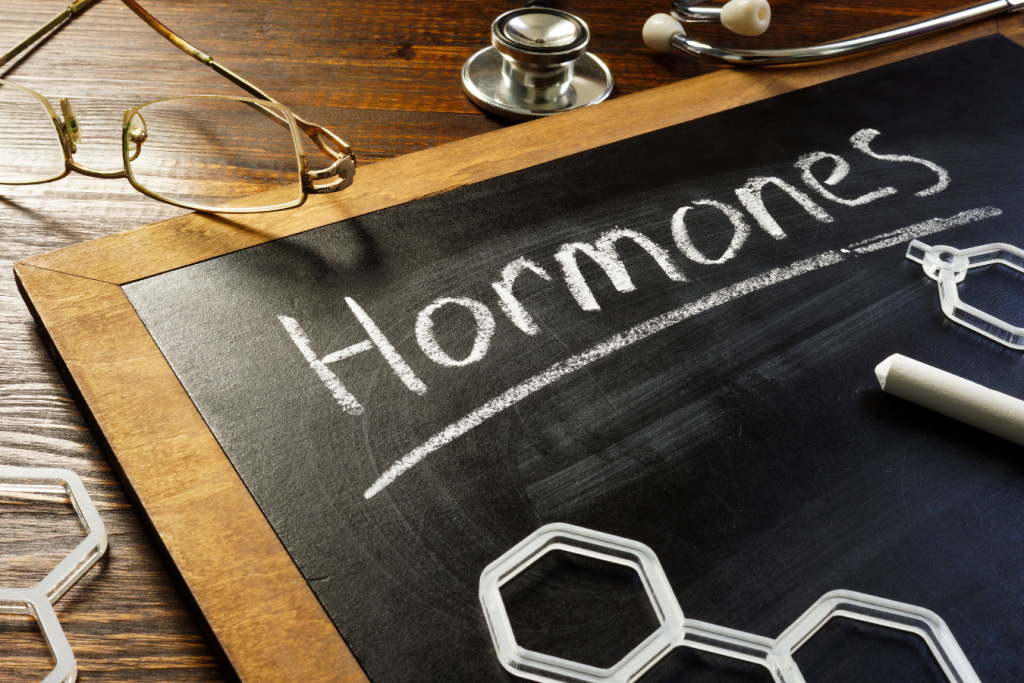Hormones are powerful chemical messengers that play a crucial role in regulating various bodily functions. In women, hormones govern everything from reproductive health to mood and energy levels. Understanding these hormones and their functions can provide valuable insights into overall health and well-being, especially during perimenopause and menopause as hormone levels change.
Key Hormones and their Function
1. Estrogen
Function: Estrogen is the primary female sex hormone responsible for the development of female secondary sexual characteristics and reproductive function. It regulates the menstrual cycle, supports pregnancy, and maintains the health of reproductive tissues.
Effects:
- Menstrual Cycle: Estrogen levels fluctuate throughout the menstrual cycle, peaking just before ovulation to prepare the uterus for potential pregnancy.
- Bone Health: Estrogen helps maintain bone density, reducing the risk of osteoporosis.
- Skin and Hair: Promotes healthy skin and hair by boosting collagen production and blood flow.
- Mood: Influences mood and emotional well-being, with low levels often linked to mood swings and depression.
Results: During perimenopause, estrogen levels become erratic and can swing between high and low levels, leading to irregular menstrual cycles. Over time, the overall production of estrogen gradually decreases, and in menopause, estrogen levels drop significantly and stabilize at a low level once menopause is complete. As a result, bone density, skin and hair health can be negatively affected. An increased risk of mood swings, anxiety, and depression are also common. Decreased estrogen can also lead to thinning and drying of the vaginal tissues.
2. Progesterone
Function: Progesterone is another key hormone in the menstrual cycle and pregnancy. It prepares the body for conception and maintains pregnancy.

Effects:
- Menstrual Cycle: Progesterone levels rise after ovulation, helping to thicken the uterine lining for a fertilized egg to implant.
- Pregnancy: Supports the early stages of pregnancy by maintaining the uterine lining and preventing contractions.
- Mood and Sleep: Has a calming effect and can promote better sleep and reduce anxiety.
Results: During perimenopause, progesterone levels drop because ovulation becomes less frequent. In menopause, progesterone production significantly decreases since ovulation stops completely. This drop affects the quality of sleep due to insomnia or disrupted sleep patterns. Sudden feelings of warmth from hot flashes also disrupt sleep.
3. Testosterone
Function: Although often associated with men, testosterone is also important for women. It plays a role in libido, energy levels, and muscle mass.
Effects:
- Libido: Testosterone contributes to sexual desire and arousal.
- Muscle and Bone Strength: Supports muscle mass and bone density.
- Mood and Energy: Influences overall energy levels and mood stability.
Results: Testosterone decreases in perimenopause and menopause, which can cause a decreased libido and reduced sexual desire. The reduction of testosterone also affects muscle mass, bone density, and energy levels. Lower levels of estrogen and testosterone can reduce sexual desire.
4. Follicle-Stimulating Hormone (FSH)
Function: FSH is crucial for reproductive health, regulating the development, growth, and reproductive processes of the body.
Effects:
- Menstrual Cycle: Stimulates the growth of ovarian follicles, which contain eggs, during the first half of the menstrual cycle.
- Fertility: Essential for the maturation of eggs, playing a key role in fertility.
Results: As the ovaries produce less estrogen during perimenopause, the pituitary gland releases more FSH to stimulate ovarian function. During and after menopause, FSH levels remain high as the body attempts to stimulate the ovaries, which no longer respond.
5. Luteinizing Hormone (LH)
Function: LH works closely with FSH and is critical for ovulation and the menstrual cycle.
Effects:
- Ovulation: Triggers the release of a mature egg from the ovary during ovulation.
- Corpus Luteum: Stimulates the formation of the corpus luteum, which produces progesterone necessary for maintaining the uterine lining.
Results: LH levels can also fluctuate, though not as dramatically as FSH. LH levels also remain higher post-menopause.

Understanding the roles of these hormones can help women recognize the signs of hormonal imbalances and seek appropriate care. Hormones are integral to many aspects of health, and maintaining their balance is crucial for overall well-being. If you have concerns about your hormonal health, it’s important to consult with a healthcare professional for personalized advice and treatment options.
Julie Chatt is a board-certified nurse practitioner and certified advanced bioidentical hormone replacement therapy provider who treats women experiencing hormonal changes due to perimenopause and menopause. She assesses each person’s hormone levels and prescribes hormones accordingly, while continually monitoring them for optimization. For more information about bioidentical hormone replacement therapy and how to get started, contact our office at 585.244.1506 or online.


Leave a Reply